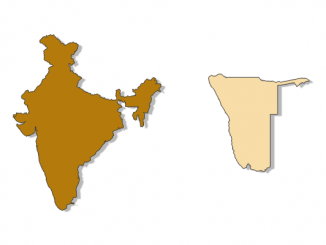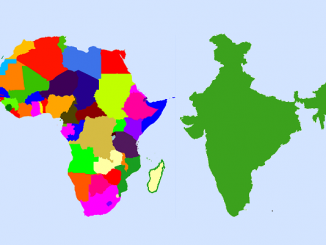
Diamonds have always been desired for their sparkle, endurance and strength. These symbols of love and commitment are much more than the jewellery you purchase, with a US $82 billion industry size and a supply chain that impacts economies and livelihoods across the globe. Whether they are mined in Africa and Canada, purchased in Europe, polished in India or retailed in USA, the industry has a far-reaching impact with the livelihood of 10 million people depending on the diamond industry. The polished diamonds industry alone totals to US $25 billion annually and India being the global hub for diamond cutting and polishing, has 1 million workers dependent on this industry, contributing to 7% of the country’s GDP.
With such a huge effect on the national and global economy, is it any wonder that diamonds have an impact that goes far beyond their renowned sparkle & brilliance?
The diamond industry collaborated with TruCost ESG Analysis, a part of S&P Global, to release a transparency report on the true reality of the diamond mining industry. The report is a comprehensive analysis of the industry’s contributions to society, including the socioeconomic and environmental benefits and impacts on the world.
“This report marks the first time Trucost has seen an industry come together to measure its environmental, social and economic benefits and impacts,” said Libby Bernick, Managing Director and Global Head of Trucost Corporate Business. “This data provides a baseline for future progress on issues, including environmental impact. We are very excited to work with the diamond mining industry and its members to release this research on the total value of their benefits and impacts, promoting greater transparency on environmental and social performance to the capital markets.”
The key finding was that the leading diamond mining industry members created socio-economic and environmental net benefits of $16 billion. The diamond mining industry employs more than 77,000, providing safe and high-quality jobs to local and indigenous people. An employee of the diamond mining industry, on an average, earns more than 66% of the national average salary of the US. The industry has also created $3.9 billion worth of benefits locally through employment.
The TruCost report points out that the diamond mining industry believes in giving back to the community. The industry infused $6.8 billion worth of benefits into communities through the purchase of local goods and services, helping local communities massively. Also, 60% of the value created by the industry is retained locally, benefitting communities directly and indirectly. The has contributed to $292 million worth of benefits towards social programs, including education and healthcare, two pivotal sectors.
The industry is wary of its environmental impact and focuses on working towards benefitting the environment in every way possible.
According to the TruCost report, the diamond mining industry members collectively emitted 160 kg of CO2e per polished carat produced, which is equivalent to the amount of CO2e generated by driving 390 miles in an average passenger vehicle, and is in fact 69% lesser than the carbon emission by lab-grown diamond manufacturers for producing a diamond of an equivalent size.
The diamond mining industry protects three times the amount of land they use for diamond mining. 83% of water used for diamond mining is recycled.
“This report is an industry first. Diamond producing companies representing three quarters of the world’s production have come together to provide a window into the impacts and benefits of their activities on the communities and environments of the countries and regions in which they operate,” said Jean-Marc Lieberherr, CEO, Diamond Producers Association. “This independent report breaks outdated stereotypes and misconceptions and identifies the next set of challenges that must be met to continue to evolve and improve as an industry. It also provides a baseline for industry participants and observers to track future progress.”
Reports like these provide transparency and showcase the reality through extensive research and hard facts. Consumers can refer to these reports to make informed decisions and contest stereotypes and clichés. To maintain a harmonious coexistence with business, consumers should be aware of the facts while the industry should adhere to its responsibility of providing full transparency and total clarity.
Disclaimer: We donot claim that the images used as part of the news published are always owned by us. From time to time, we use images sourced as part of news or any related images or representations. Kindly take a look at our image usage policy on how we select the image that are used as part of the news.


